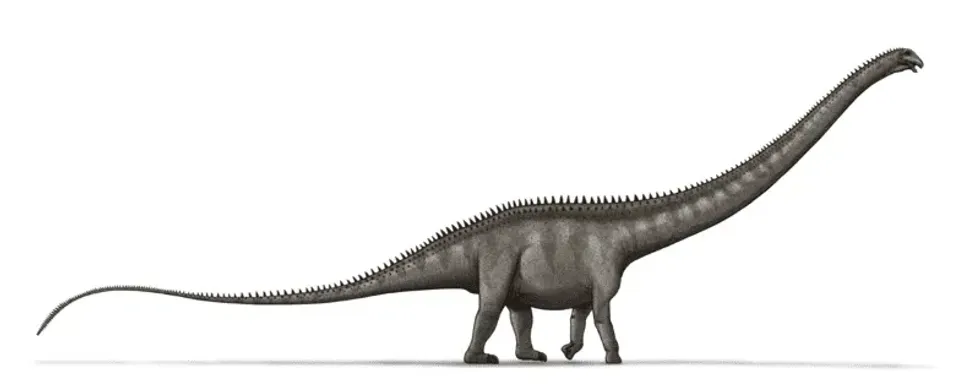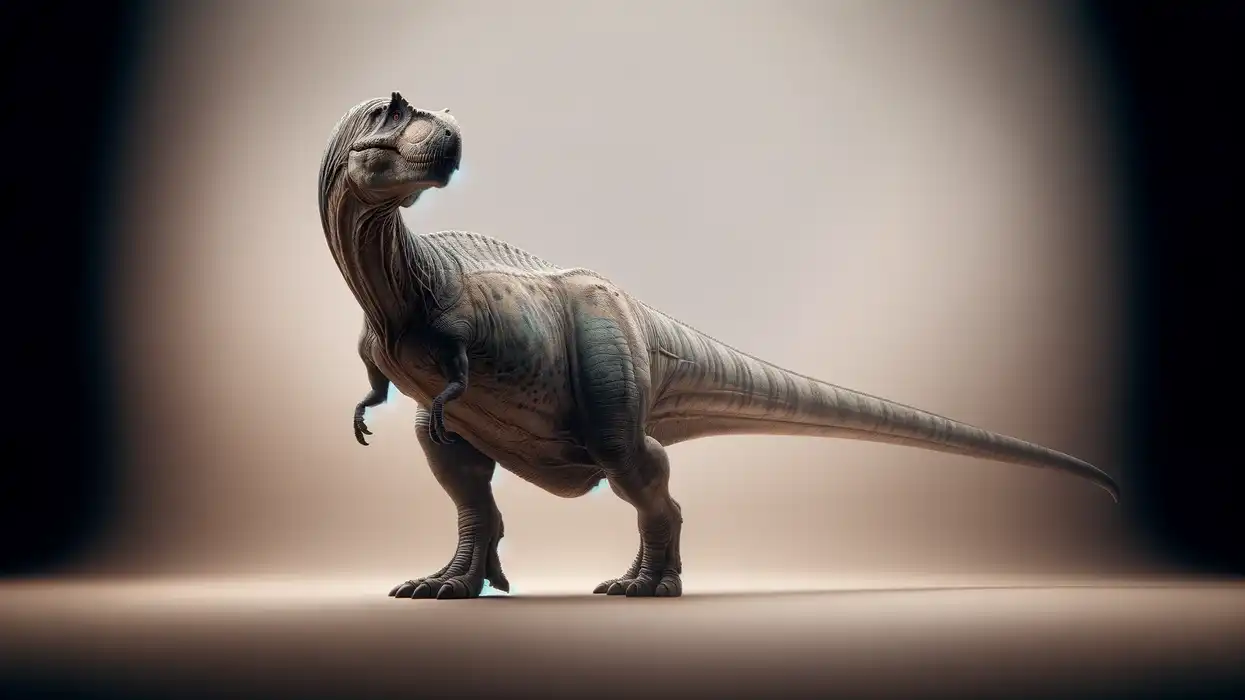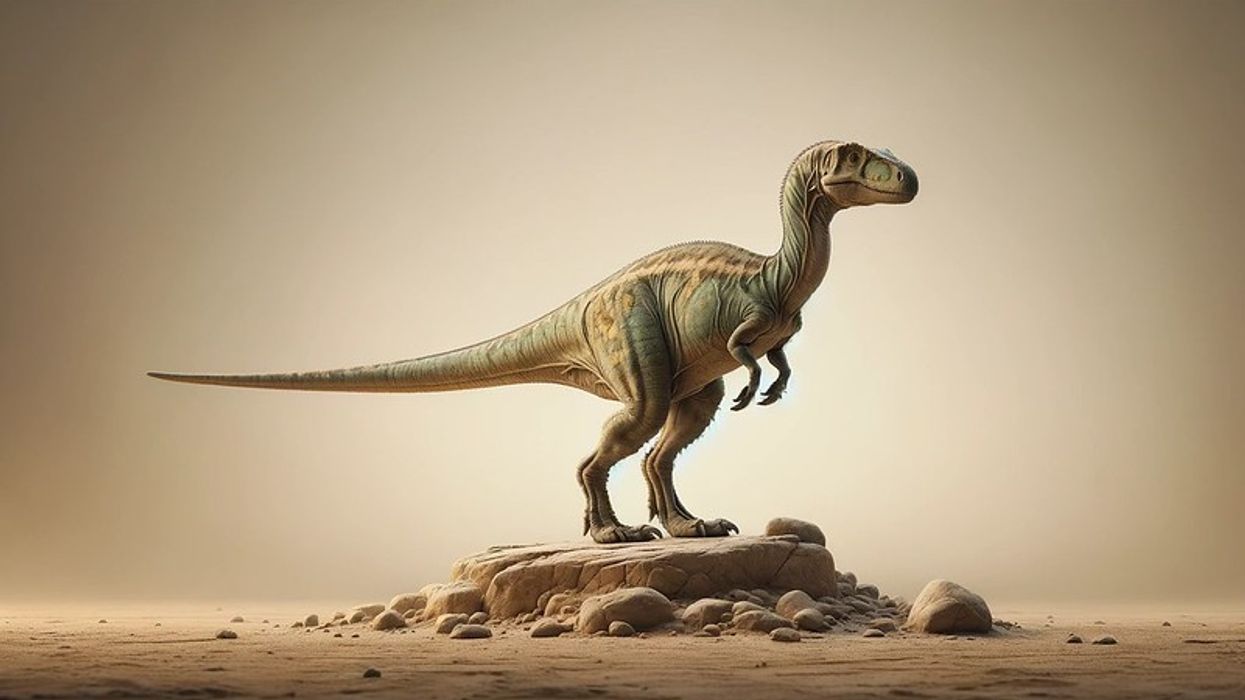The Supersaurus was a long-necked sauropod that was found in North America from the Late Jurassic period. This sauropod was a close species of Diplodocid.
The Supersaurus may have belonged to the Apatosaurus but had a less robustly built body. The fossils of the Supersaurus were found in the Morrison Formation, Colorado, in 1972 and described by James Alvin Jensen.
The remains of Supersaurus were recovered from Dry Mesa Quarry in southwest Colorado. The meaning of the name Supersaurus is 'super lizard'.
The type species of the genus Supersaurus is Supersaurus vivianae. This species was described by Vivian Jones of Delta, Colorado. There is a possibility of a second type species, Supersaurus lourinhanensis, being found in Portugal from the same time period and epoch.
These dinosaurs were originally named Ultrasauros Macintoshi by James Alvin Jensen, but later the dorsal vertebra specimen was found to be a Supersaurus. The Ultrasauros Macintoshi was then, later on, called the junior synonym of Supersaurus. The genus name Ultrasauros then diminished. These long-necked sauropod dinosaurs had long cervical vertebrae with long-tail vertebrae and a small head.
The new and complete specimen, nicknamed Jimbo, WDC DMJ-021 of Supersaurus, was also discovered in Converse County, Wyoming in 1996. The remains of these dinosaurs are kept at the Wyoming Dinosaur Center.
Learn some interesting fun facts about other dinosaurs, such as Alamosaurus and Giraffatitan.
Supersaurus Interesting Facts
How do you pronounce 'Supersaurus'?
The pronunciation of the word Supersaurus is 'Su-per-sore-rus'.
What type of dinosaur was a Supersaurus?
The Supersaurus was first described and interpreted wrongly as Ultrasauros by James Alvin Jensen. However, later, the specimens were correctly extrapolated and referred to as the Supersaurus vivianae by Vivian Jones.
From the history and specimens of the remains of Supersaurus, they fall under the clades Dinosauria, Saurischia, Sauropodomorpha, and Sauropoda, and belong to the family Diplodocidae.
The genus Supersaurus type species is Supersaurus vivianae. In comparison to other sauropods such as Brachiosaurus and Sauroposeidon, these dinosaurs were less intelligent though they had two brains.
The fossil remains of bones discovered from Dry Mesa Quarry consisted of the shoulder girdle and tail vertebrae.
The shoulder girdle stood at a height of 8 ft (2.4 m) tall if placed on the end of the tail vertebrae and was later referred to as the Brachiosaurus. The Jimbo specimen was found by Brandon Flyr and Bart Lesco and showcased around a third of the skeleton.
In which geological period did the Supersaurus roam the earth?
The Supersaurus sauropod roamed around the earth during the Late Jurassic period in the Kimmeridgian to Tithonian stages, from 157.3 million to 145 million years ago.
When did the Supersaurus become Extinct?
The long neck Supersaurus became Extinct between 157.3 million and 145 million years ago, in the Late Jurassic period.
Where did Supersaurus live?
These sauropods may have lived in the Morrison Formation of Colorado as their fossil remains bones were discovered at the Dry Mesa Quarry in the southwestern part of Colorado in 1972. The nicknamed Jimbo specimens were discovered in Converse County, Wyoming in 1986.
Jensen has played a significant role in the discovery of these dinosaurs' bones from different sites of bones.
What was the Supersaurus' habitat?
These sauropods, Supersaurus, were believed to dwell in the woodlands of North America. These sauropod species must have been acquainted with living in green vegetation from low-lying areas to high tree canopies in search of food.
Who did Supersaurus live with?
It is unknown whether these sauropods lived in a herd or not. However, from a few general resources, it is evident that they shared their habitat with other sauropods such as Brachiosaurus, Camarasaurus, and Apatosaurus.
How long did a Supersaurus live?
These sauropods, with a long neck and a small head, lived between 157.3 million years ago and 145 million years ago. Their lifespan was around 100 years!
How did they reproduce?
From the history of sauropods, content is available regarding them being oviparous and reproduced by mating, but very little information is available with regard to the exact reproduction process of the sauropods from their species. These dinosaurs, from the family of Diplodocid, would have had similar reproduction methods to other sauropods, such as Brachiosaurus.
Supersaurus Fun Facts
What did Supersaurus look like?

These dinosaurs, originally named Ultrasauros, were less robustly built compared to Apatosaurus. The specimen of a few bones as described by Jensen found in Dry Mesa Quarry in 1972 had the shoulder girdle and tail vertebrae.
Their shoulder height was 8 ft (2.4 m) tall. The dorsal vertebra of Ultrasauros was later assigned to Supersaurus in the Museum of Ancient Life.
A complete specimen of the sauropod has not been found and research continues about these dinosaurs.
From the specimens of these sauropods with a long neck, it is known that they belonged to the sauropod family and that they had a long tail with the dorsal vertebra of a Diplodocid. These dinosaurs were believed to have two brains but still were not regarded as intelligent animals.
Their color could have varied from gray to brown, green to white, and black. The teeth of these dinosaurs could have been blunt like other herbivorous sauropods.
How many bones did a Supersaurus have?
Scientists have not discovered the complete remains of the Supersaurus, therefore, the exact number of bones they had cannot be estimated and is unknown to the world. In later years, the remains of the specimen nicknamed Jimbo were found in Wyoming in 1996, and was the only complete specimen.
How did they communicate?
The communication of these sauropods has not been described by Jensen, but on a general basis, it can be extrapolated that these dinosaurs must have communicated using tactile and chemical cues.
How big was the Supersaurus?
The Supersaurus belonged to the family of diplodocids and was 108-112 ft (33-34 m) in length. They were 54 ft (16.5 m) tall. Their long neck was 39 ft (12 m) long.
How fast could a Supersaurus move?
The Supersaurus was slow in their movements because of their weight. They were quadrupedal (walked on four legs) with thick legs and two brains.
How much did a Supersaurus weigh?
The Supersaurus weighed around 35-40 short tons (31.75-36.28 metric tons).
What were the male and female names of the species?
The male and female of the species did not have any sex-specific names.
What would you call a baby Supersaurus?
The babies of Supersaurus were called juveniles or hatchlings.
What did they eat?
Supersaurus were herbivores and had blunt teeth to chew their plant food such as ferns, plums, and conifers. They also feed on horsetails and club mosses. They must have kept their long parallel neck to the ground in order to feed on low-lying vegetation.
How aggressive were they?
There is not much information available in context to them being aggressive or not. However, they would have been aggressive while protecting their babies from predators such as Allosaurus, Saurophaganax, Torvosaurus, Ceratosaurus, Marshosaurus, and Ornitholestes.
Did you know...
The Humboldt Museum in Berlin is known to be home to the fossils of most sauropods, like Giraffatitan and Brachiosaurus.
Brachiosaurus, a dinosaur found in Africa, inspired the Giraffatitan's name (B. brancai). They were once thought to be the largest dinosaurs, but new research and discoveries by paleontologists revealed that the four-legged Giraffatitan brancai was larger.
Why are they called Supersaurus?
They are called Supersaurus because they were the longest dinosaurs found in North America and were called 'super' due to their huge size.
Is Supersaurus the longest dinosaur?
Yes, the Supersaurus is the longest dinosaur and is in the category of longest dinosaurs. The tallest dinosaur is Sauroposeidon and the largest dinosaur is Brachiosaurus.
Here at Kidadl, we have carefully created lots of interesting family-friendly dinosaur facts for everyone to discover! Learn more about some other creatures from our Amargasaurus facts, or Sauroposeidon facts for kids.
You can even occupy yourself at home by coloring in one of our free printable Supersaurus coloring pages.










